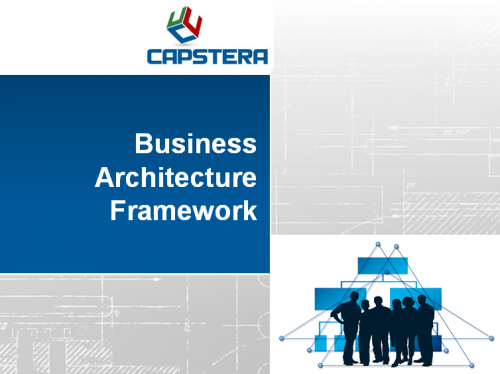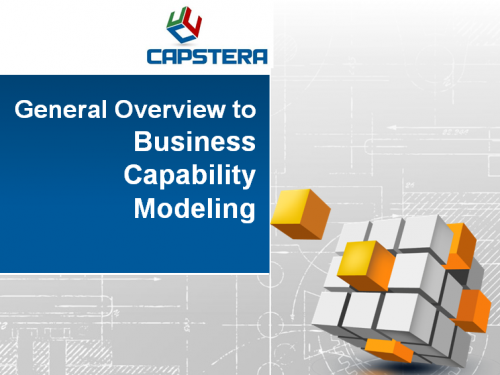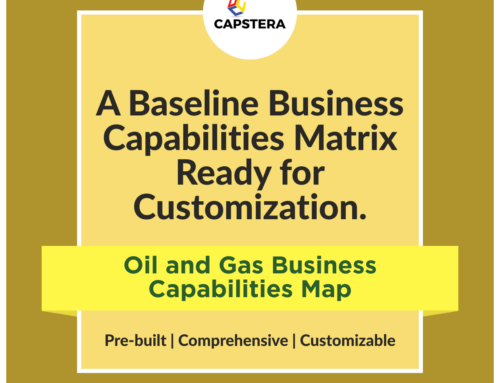
What is Enterprise Business Architecture?
Enterprise Business Architecture is a blueprint that provides a comprehensive view of an organization from a business perspective. It aligns the Strategy, processes, information, technology, and other business components to ensure the organization achieves its goals. In addition, it provides a roadmap for decision-making, aiding in the Business’s transformation, growth, and evolution.
Capstera defines enterprise business architecture as a holistic and integrated model of a firm that links a company’s strategic, structural, informational, technological, and operational aspects.
How do the industry gurus define Enterprise Business Architecture?
Leading industry experts define Enterprise Business Architecture as a holistic, multidimensional model that bridges the gap between business strategy and execution. It aligns the organization’s operations and systems with its strategic goals, facilitating effective decision-making and efficient change management.
As an evolving discipline, enterprise business architecture definitions are pretty diverse, with differences in the level of emphasis, elements, and entities. As a result, there are several definitions of enterprise business architecture. While there may be semantic differences, the core purpose of enterprise business architecture is to encapsulate the essence of Business in actionable elements and entities.
What are the Components of Enterprise Business Architecture?
Key components include Strategy, which defines the business vision and goals; Business Processes that outline operational activities; Organization structure which describes roles and responsibilities; Information and data providing insights into customer and market behaviors; Technology which supports business operations; and Business Capabilities which delineate the organization’s competencies and value delivery.
Who should Business Architects Report to?
Business Architects typically report to high-level management like the Chief Information Officer (CIO), Chief Technology Officer (CTO), or a high-ranking executive within the Strategy or Planning division. This placement allows architects to have a broad perspective and influence business-wide decisions.
Why are Business Capabilities a vital part of Business Architecture?
Business Capabilities represent what a business does or can do, independent of how it does it. They serve as the building blocks of the organization, enabling it to deliver value to customers. Understanding and mapping business capabilities help reveal strengths, weaknesses, opportunities for innovation, and areas for improvement or investment.
How do we build a business capability map?
To create a business capability map, start by identifying core capabilities – the activities the Business must perform to deliver value. Then, organize these into a hierarchical model that ranges from high-level, strategic capabilities to detailed, operational ones. Finally, this map should be validated and refined through iterative collaboration with organizational stakeholders
- Can you show me an example of how to decompose and create a business capability model?
Capstera team took the HR function and detailed how to conceptualize and decompose business capabilities. This sample business capability map creation process should shed some insight and ideas for you.
What are the typical deliverables of enterprise business architecture?
Standard deliverables include strategic alignment diagrams, business capability maps, business process maps, information flow diagrams, organization charts, and technology roadmaps. These provide a comprehensive and coherent picture of the organization and guide strategic decision-making.
What is a Business Architect? What does a Business Architect do?
A Business Architect bridges the gap between Strategy and execution, aligning the organization’s objectives with its operations. They define and design the enterprise structure, processes, information, and technology to deliver business value. In addition, they provide leadership in implementing change and managing complexity within the organization.
How much money do Business Architects make?
Business Architects in the United States typically earn between $110,000 and $170,000 annually, depending on experience, location, and the complexity of the role. However, salaries keep changing, and it is essential to research them on websites such as Payscale.com, Glassdoor.com, and other such resources.
Can I buy a ready-to-use Business Capability Map? What are the pros and cons?
Ready-to-use business capability maps are available from various vendors. The advantage is quick implementation without the need for extensive internal resources. However, they may not fit your organization’s unique needs perfectly, potentially requiring customization. A bespoke map developed internally may align more with your business model and Strategy. Capstera offers several pre-built and customizable functional business capabilities maps, industry/sector business capabilities maps, and technology capability maps. Please consider purchasing a comprehensive straw model capabilities model and then customize it to your needs.
What is the difference between Enterprise Business Architecture and Enterprise Architecture?
Enterprise Business Architecture is a subset of Enterprise Architecture. While Enterprise Architecture covers the full breadth of an organization’s components—including technology, data, security, and applications—Enterprise Business Architecture focuses specifically on the business strategy, processes, and capabilities.
What is the difference between Business Design and Business Architecture?
While both fields aim to improve business effectiveness, Business Design is broader, focusing on the entire customer experience, including product design, brand, and marketing strategy. Business Architecture, however, is more focused on the internal aspects of the organization, such as processes, capabilities, and structures, to enable strategy execution.
How can I learn more about Enterprise Business Architecture?
Capstera offers a treasure trove of information about business architecture in its blogs and various digital products. In addition, numerous resources are available to learn about Enterprise Business Architecture. These include academic courses, professional certifications like those offered by The Open Group and the Business Architecture Guild, books, webinars, and online communities. Regularly reading reputable industry publications and attending relevant conferences can also provide valuable insights.
Please consider some of the following products from Capstera.
-

Business Architecture Current State Audit
-

Business Architecture Framework Template
-

Business Capability Management Playbook
-

Business Capability Modeling Overview




